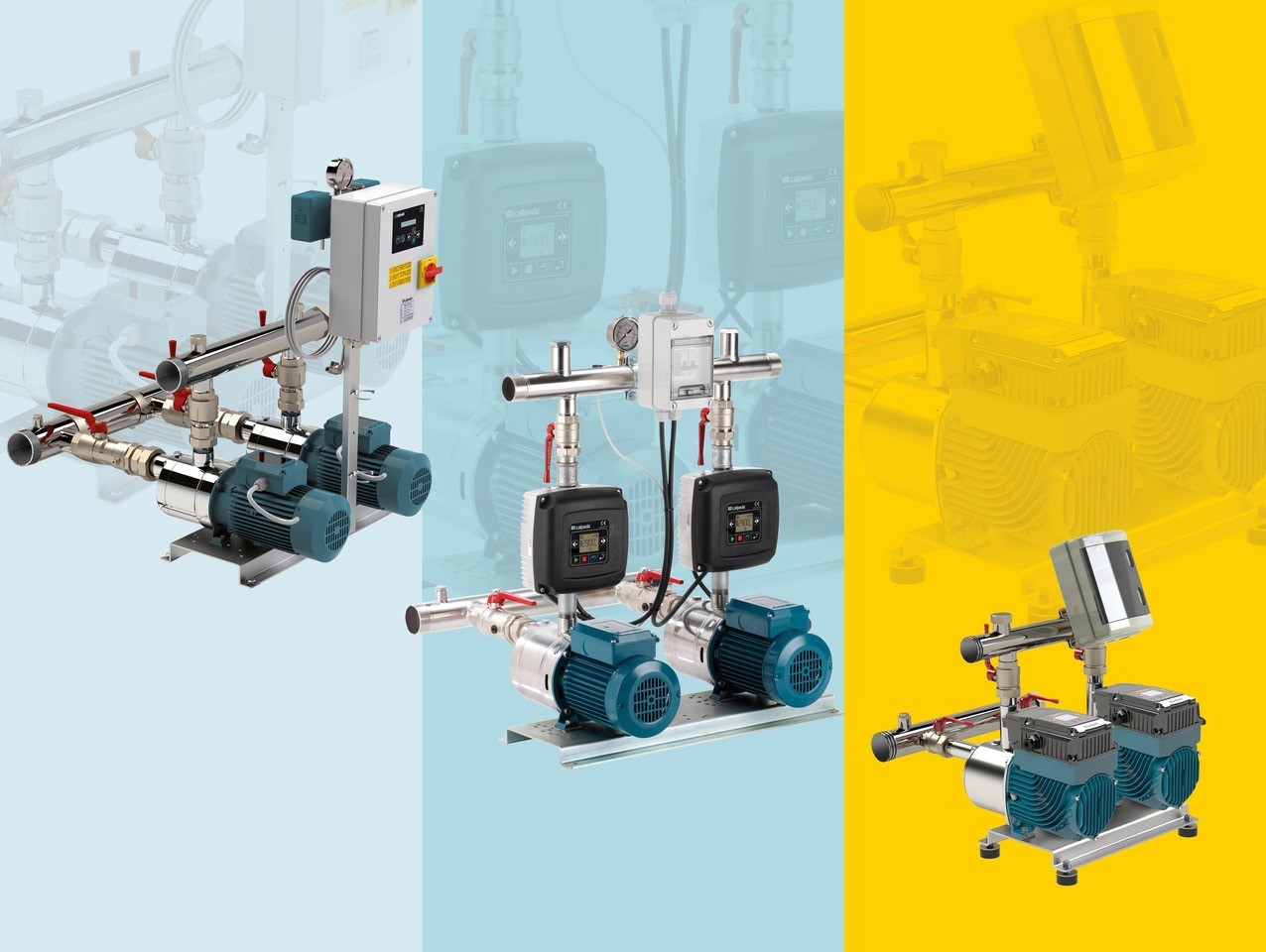Let’s begin with the definition. The first thing that comes to mind with water pressure units is the image of a system with several electric pumps connected to each other in parallel and mounted on a common base. This definition is correct, which tells us about the technical make up of a pressurisation unit. It is the function of this type of product, however, that holds the most interesting information. In the hydraulics world we use the term “water pressure unit” to indicate a pump system that automatically maintains constant the pressure inside a system.
No matter whether multistorey residential buildings, schools, hospitals or even contexts like irrigation, car washes, industrial water and processing systems, water pressure units are a perfect solution wherever service continuity and satisfying pressure are needed.
The study and development of different pressure control methods have resulted in the development of this type of product, which is a unification of different things: supply safety, user comfort and growing environmental sustainability.
This is why water pressure units are a very interesting challenge for motor pump manufacturers, which are required to produce systems that are increasingly more efficient and compact but which can still guarantee the requested amount of water and a minimum pressure variation according to the flow rate using the least number of pumps possible.
Fixed speed water pressure units: the most traditional choice
Water pressure units with set speed pumps are the starting point in the story of this product. The principle on which they are based is common to all water pump units: several pumps that share the total pumping capacity. The pumps start working when required by the users, guaranteeing that the system has a set pressure thanks to a power panel with microprocessor that determines cascade starting. Fixed speed water pressure units continue being a versatile, reliable choice that guarantee optimal supply security. For their sizing, in other words the number, power, capacity and pump head, it is essential to consider the maximum true requirement of the system, which considers the number of users, the consumption of each type of user, and the contemporaneity factor.
Variable speed units: the best comfort united with energy savings
Variable speed water pressure units are another step forward. They guarantee constant pressure as the request for water varies, searching optimal conditions for pump operation at the same time.
This type of water pressure unit is characterised by its inverter technology.
Inverters are electronic devices that can be used to modify the electric motor speed by varying the frequency, so that the motor speed corresponds with the effective head requirements.
As a result, the motors of variable speed pumps that are regulated by inverter technology do not always work at a steady speed, but rather in relation to the requested flow rate, without uselessly stressing consumption. The inverter works in real time on the characteristic pump curve, ensuring that the operating point is always close to the one that offers the most efficient flow rate. The motor, therefore, only consumes the energy needed to supply the requested amount of water moment by moment. It is a total and continuous pump control system that results in optimal pressure for the end user and an important optimisation of energy consumption.
Mèta e Mèta small: the smallest water pressure unit
These products of the e-idos line look like a pump but in fact are already complete water pressure systems that can guarantee constant pressure at variable speed. They are highly innovative pumps, a perfect integration of hydraulics and electronics.
Their extreme compactness is their most evident quality, the result of a full integration of all the elements that make up a water pressure system. The membrane tank is inside the pump body, the check valve is incorporated at suction and the inverter is integrated with motor. But Mèta philosophy means, also and above all, a highly efficient performance and an eco sustainable soul.
Mèta: efficiency, compactness and silence
The water pressure systems with Mèta pumps are an interesting solution that enhances all the strong points of this range. First, its compactness. Mèta pumps not only have an inverter that is already integrated, but are also equipped with pressure sensors. This means you can create systems without needing control panels or wiring. All that needs to be done is connect the pumps hydraulically for immediate redundancy. They work synergically, in a synchronised, random or cyclical manner, to keep the pressure optimal. This absence of external control elements naturally means less space needed and lower costs, in addition to notable programming and use simplicity, things that make these systems true plug and play solutions.
Then there is energy saving. Containing consumption, which water pressure systems already try to do with their concept of dividing and managing partial loads, benefits from the extremely high performance of Mèta pumps. Last but not least, silence. Systems that include Mèta Small pumps become extremely silent thanks to the technologically advanced system that has eliminated motor ventilation.
Customised, sustainable solutions
After having seen the different solutions for controlling water pressure, we want to look at a transversal aspect that distinguishes all water pressure units, namely modularity.
A water pressure system comes from the assembly of single units, which makes it possible to create different configurations. But that is not all. Even water pressure systems can be connected to each other, verifying correct component sizing. This means the precision of the system requirements can be approached as much as possible, avoiding useless oversizing. Modularity, or customisation, also lead to efficiency, both regarding consumption and production.





